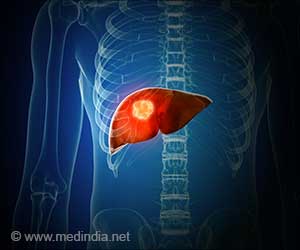AI or machine learning approach identified chemical markers that are important in accurately predicting who will develop Parkinson's disease in the future.

After comparing these metabolites to those of 39 matched control patients – people in the same study who didn’t go on to develop Parkinson’s – the team were able to identify unique combinations of metabolites that could prevent or potentially be early warning signs for Parkinson’s (1✔ ✔Trusted Source
Interpretable Machine Learning on Metabolomics Data Reveals Biomarkers for Parkinson’s Disease
Go to source).
As UNSW researcher Diana Zhang explains, she and Associate Professor W. Alexander Donald developed a machine learning tool called CRANK-MS, which stands for Classification and Ranking Analysis using Neural network generates Knowledge from Mass Spectrometry.
“The most common method of analyzing metabolomics data is through statistical approaches,” says Ms Zhang.
Artificial Intelligence-Enabled Detection of Parkinson's Disease
“So to figure out which metabolites are more significant for the disease versus control groups, researchers usually look at correlations involving specific molecules.“But here we take into account that metabolites can have associations with other metabolites – which is where the machine learning comes in. With hundreds to thousands of metabolites, we’ve used computational power to understand what’s going on.”
A/Prof. Donald says that in addition to looking at combinations of metabolites, the researchers used an unedited list of data.
Advertisement
“But here we feed all the information into CRANK-MS without any data reduction right at the start. And from that, we can get the model prediction and identify which metabolites are driving the prediction the most, all in one step. It means that if there are metabolites which may potentially have been missed using conventional approaches, we can now pick those up.”
How This Could Be Significant for Parkinson’s Disease
At present, Parkinson’s Disease is diagnosed by observing physical symptoms such as a resting hand tremor. There are no blood or laboratory tests to diagnose non-genetic cases of it. But atypical symptoms such as sleep disorder and apathy can present in people with Parkinson’s decades before the motor symptoms show up. CRANK-MS, therefore, could be used at the first sign of these atypical symptoms to rule in or out, the risk of developing Parkinson’s in the future.Advertisement
"This study is interesting at multiple levels,” he says.
“First, the accuracy is very high for predicting Parkinson's disease in advance of clinical diagnosis. Third, some of the chemical markers that drive accurate prediction the most have been previously implicated by others to Parkinson's disease in cell-based assays but not in humans."
There were some interesting findings when examining the metabolites of people who went on to develop Parkinson’s in the study.
For example, triterpenoids were found in lower concentrations in the blood of those who later developed Parkinson’s disease compared to those who did not. Triterpenoids is a known neuroprotectant that regulates oxidative stress and is commonly found in foods such as apples, olives, and tomatoes. A future study could examine whether eating these foods could naturally protect against developing Parkinson’s disease.
Also worthy of further exploration was the presence of polyfluorinated alkyl substances (PFAS) in people who went on to develop Parkinson’s, which could be linked to being exposed to industrial chemicals.
“We have evidence to suggest that it is PFAS, but we need more characterisation data to be 100 percent sure,” says A/Prof Donald.
CRANK-MS is a tool that is publicly available to any researchers who would like to use machine learning for disease diagnosis using metabolomics data.
“We’ve built the model in such a way that it’s fit for purpose,” says Ms Zhang.
“The application of CRANK-MS to detect Parkinson’s disease is just one example of how AI can improve the way we diagnose and monitor diseases. What’s exciting is that CRANK-MS can be readily applied to other diseases to identify new biomarkers of interest.
“The tool is user-friendly where on average, results can be generated in less than 10 minutes on a conventional laptop.”
Reference:
- Interpretable Machine Learning on Metabolomics Data Reveals 2 Biomarkers for Parkinson's Disease - (DOI: 10.1021/acscentsci.2c01468)












